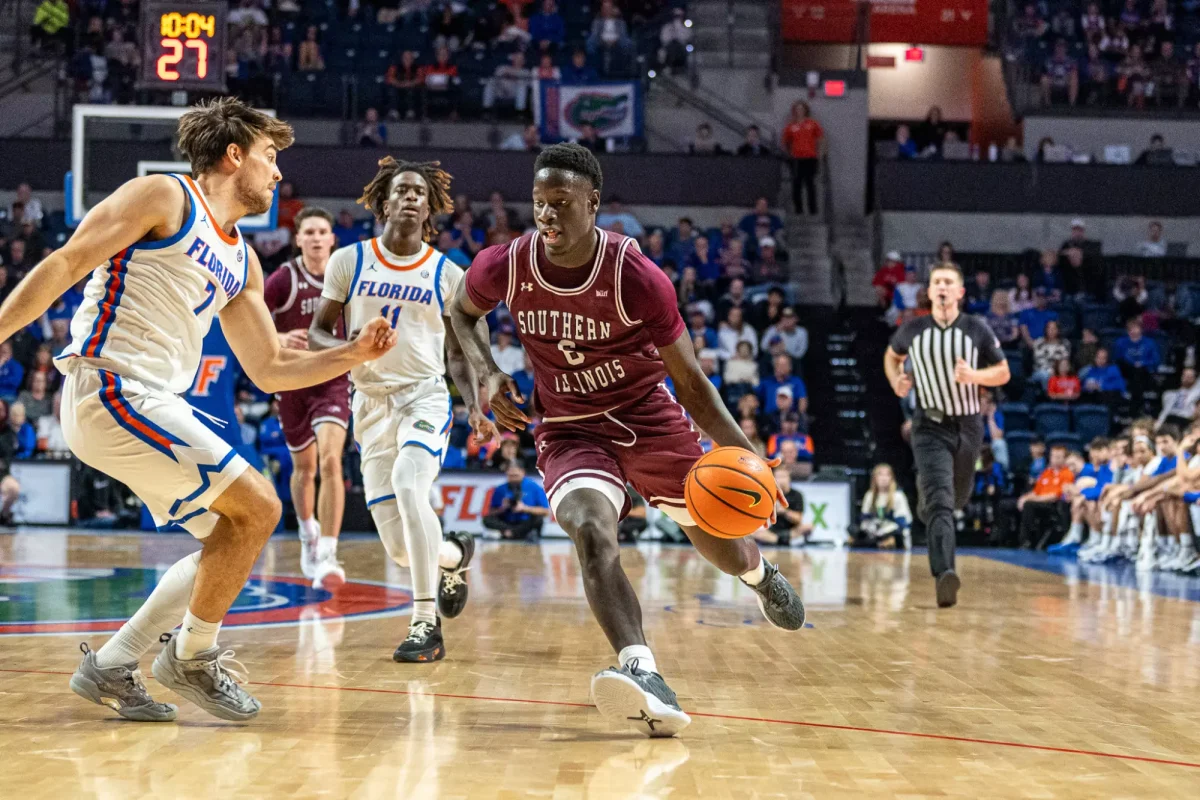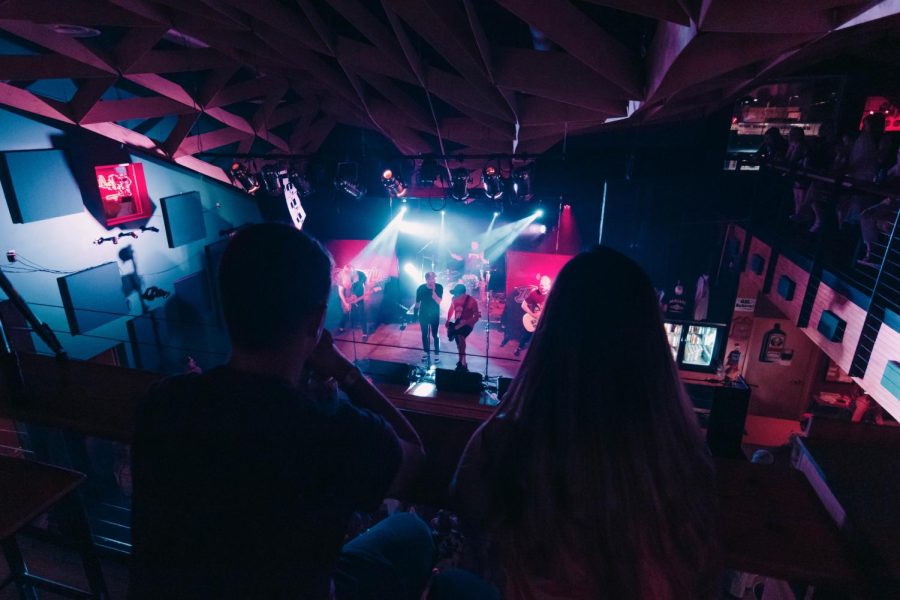Six athletes elected to 2012 Saluki hall of fame

SIU Hall of Fame inductee Joel Sambursky sits with his former football coach Jerry Kill during the induction ceremony Friday at the SIU arena. Sambursky said he attributes his success as a quarterback to coach Kill and the accomplishments of his teammates. Sambursky was a first-ballot hall of fame selection for the 2012 class of inductees. Chris Zoeller
February 5, 2012
Joel Sambursky is one of six former athletes inducted into the Saluki Athletics Hall of Fame on Friday, but nine years ago he was the freshman quarterback inheriting a 1-10 team.
“The state of the program was in despair. Nobody believed we could win,” Sambursky said. “There was much more people in the tailgate than in the game, and that motivated us so much internally to get things turned around.”
Sambursky is one of six honorees in this year’s class. The others are Kristie Kemner for volleyball; Sandy Blaha for women’s golf; Nate Hawthorne and John Garrett for men’s basketball; and Gary Hunter for men’s track and field.
Advertisement
The inductees were honored during the SIU men’s basketball game against Evansvillle Saturday.
Sambursky started his first game as a freshman in 2002, and after a 4-8 campaign in his first year, he helped spark a run of seven straight playoff appearances for SIU.
“If we were a .500 football team, I probably wouldn’t be getting inducted,” Samburksy said. “The fact we went from worst to first in three years speaks to not just what I did, but what my guys did. They did the impossible. I hope my induction is a reflection of their work.”
Current Minnesota head coach Jerry Kill was the Saluki head coach for five of those playoff teams, but also the 1-10 team in 2001.
“The kid means the world to me,” Kill said. “You talk about starting the football tradition back at Southern Illinois — Joel Sambursky was the trigger man. He’s a great competitor, street fighter who played hard. You trusted him, because he knew how to win.”
Sambursky, who currently provides color commentary for Saluki Football broadcasts and serves as a financial advisor for the Forbes Financial Group, is the youngest of the six honorees.
Kristie Kemner was a senior outside hitter for the Saluki volleyball team by the time Sambursky arrived on campus in 2002. She was finishing a career that put her at the top of SIU’s all-time leaderboard for kills (1,660) and attempts (4,359).
Advertisement*
Kemner currently works with the Quincy Medical Group in Quincy as a behavioral health specialist. When Kemner was born in 1980, Sandy Blaha was already near the end of her run as a golf coach for SIU.
“They didn’t even have colored pictures of us as athletes,” Blaha said.
Blaha came to SIU as an undergrad in 1970, before Title IX passed and required schools to give women athletic scholarships. She had to play several sports to earn a participation award, which was given to female athletes to pay a portion of their school costs.
She said it was a serious strain on her first two years of school, because while she was in the midst of four straight National Intercollegiate Golf Championship appearances, she played volleyball, basketball and field hockey.
“We would leave the dorm early in the morning. We’d go to our classes. If it was in the fall, and we had golf practice, we’d go out and play 18 holes,” Blaha said. “Then we might have to go to volleyball practice, since those seasons intersect. You couldn’t focus on the sport you excelled in.”
Blaha said once Title IX passed in 1972, she dropped a few sports and her academics became easier to manage. But she said life in Carbondale during the 1970s was never relaxed, when she was an undergraduate from 1970 to ‘74, or when she served as a golf coach from ‘75 to ‘81.
Blaha said she remembered one day when she lived in Mae Smith, there was a small group of protesters outside her dorm.
“All of a sudden, the police officers started swarming down over the walkway over the highway, and shooting tear gas at this small group of people,” Blaha said. “I was watching this in the seventh floor of Mae Smith, so I essentially got gassed as I was sitting in my dorm.”
The other three inductees were also from the ‘70s: John Garrett, Nate Hawthorne and Gary Hunter.
Garrett and Hawthorne played on the same basketball team of the early ‘70s, and Garrett said he remembers the tumultuous atmosphere around campus at the time.
“It was turbulent years as far as being a student. It was the Vietnam era, the war was going on, there was a lot of protesting going,” Garrett said. “There were things that are really hard to imagine unless you were here.”
Hawthorne died in 2005 from a massive heart attack. He played three years in the NBA, and Garrett had nothing but praise for his former teammate.
“Nate was fun to play with, he was fun to watch,” Garrett said. “He had such a great vertical jump, it was incredible.”
By the time Hunter arrived in 1974, he said the political climate around campus was more relaxed than what Blaha and Garrett recalled. Hunter won five straight Missouri Valley Conference pole vault titles in his SIU career.
“I wish I won more,” Hunter said.
Advertisement









